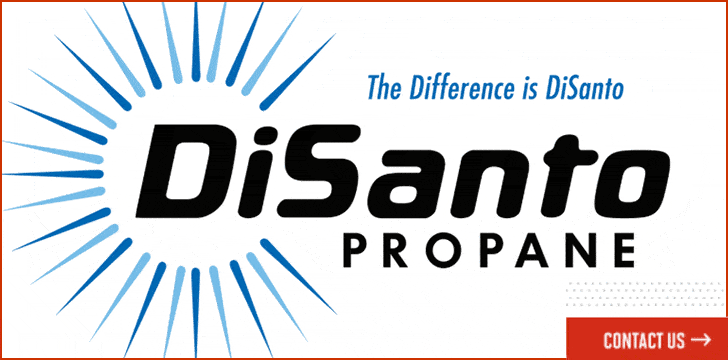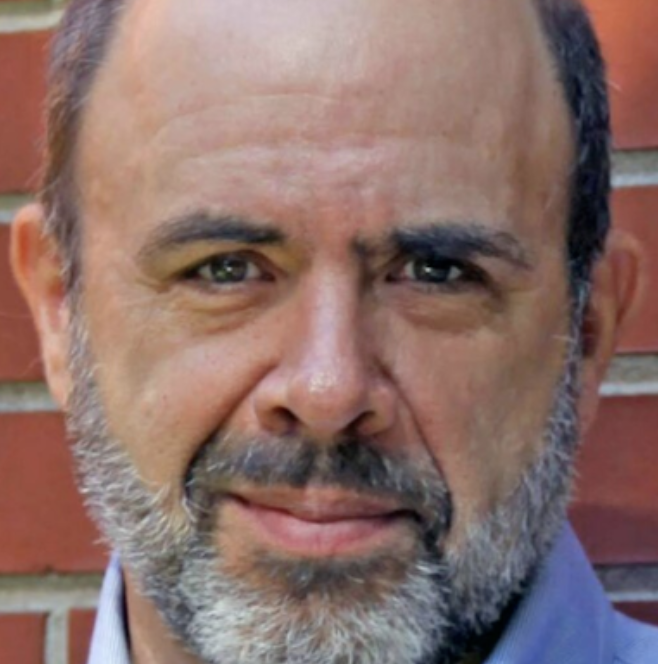Gov. Andrew Cuomo signed a bill Monday that makes New York the first state in the nation to apply hazardous waste laws to potentially toxic oil and gas byproducts.
The action, coming just months after the state codified into law its 2014 policy ban on fracking for shale, solidifies the governor’s legacy of applying public health standards to a powerful and often weakly regulated industry.
The bill’s legislative sponsors and leading environmental groups praised the governor for closing a “dangerous loophole” in the way oil and gas wastes are regulated.
However, throughout Cuomo’s near-decade in office, oil and gas drilling wastes from hundreds of fracked Pennsylvania wells have been dumped in upstate New York landfills and spread on the state’s roadways.
Cuomo’s Department of Environmental Conservation supervised the flood of waste imports with apparent deference to the industry and its backers, downplaying the health risks and even denying outright the existence of the problem.
“No fracking waste is being dumped in New York,” DEC Commissioner Basil Seggos told a legislative hearing on Sept. 7, 2016. That prompted the Poynter Institute’s Politifact to rate the statement “False” on its “Truth-O-Meter.”
That wasn’t an uncharacteristic stray statement.
Asked late last month to comment on the hazardous waste bill, a DEC spokesperson provided an agency response that said, in part: “To be clear, there is no loophole for fracking waste.”
Fracking fluids, the July 28 DEC statement to WaterFront continued, are prohibited in New York landfills, while solid wastes imports that are permitted are carefully screened to “protect public health and the environment.”
But skeptics were abound.
Dr. David Carpenter, director of the Institute for Health and the Environment at the University of Albany, said in an affidavit: “The net effect of New York accepting drill cuttings and de-watered mud from Pennsylvania fracking sites will be that New Yorkers will have an increased risk of cancer, especially lung and gastrointestinal cancers, and increase of birth defects coming from DNA damage and an increased risk of shortened life span.”
Anthony Ingraffea, a retired professor of rock mechanics at Cornell University, said in a recent interview: “Perhaps we’ll never know what the environmental and health impacts of all that (fracking waste) currently in New York will be. They’ve made our bed, and now we have to lie in it.”
Since January 2011, New York landfills have imported more than 638 thousand tons of waste from Marcellus shale gas wells in Pennsylvania, according to records that state maintains. (New York doesn’t maintain its own statistics).
Those landfills and unrelated transfer stations have imported more than four thousand barrels of liquid shale drilling wastes. (A graphic below by Melissa Troutman of Earthworks uses Pennsylvania data to show NY imports of Pennsylvania’s shale waste from 2011 to 2019.)

The imports peaked during the height of Pennsylvania’s fracking boom in 2011-2013 and have trailed off in recent years as the drilling pace has slowed.
But even as sites in Ohio and West Virginia have grown as importers, New York has continued to provide Pennsylvania a legal outlet, a “lifeline” for their inconvenient waste, according to Maya Van Rossum, right, a lawyer who heads the Delaware Riverkeeper Network.
As recently as last year, New York imported 458 tons of “unused fracturing waste fluid,” a waste category Pennsylvania measures in tons rather that barrels.
“Waste has been called the Achilles’ Heel of the fracking industry, because it’s so toxic, there’s so much of it, and it can’t be disposed of safely,” said Eric Weltman of Food & Water Action, a Washington, D.C.-based environmental group.
The average high-volume fracking job requires about four million gallons of water, much of which returns to the surface laced with fracking chemicals and radioactive elements. While the flowback can be reused, eventually it becomes concentrated and must be disposed of.
In the wake of the 2008 financial crisis, the oil and gas industry boomed nationwide, as refined high-volume hydrofracking techniques allowed drillers to tap vast shale deposits like the Marcellus. Fueled by Wall Street, the industry provided many thousands of new jobs and gave the nation a sense of energy independence.
That wave of prosperity, which has crested, relied on gentle regulation. Under federal law, oil and gas wastes were (and still are) exempt from regulation as hazardous material.
Under New York’s new law, those types of waste will now have to be tested for characteristics of hazardous waste, including ignitability, corrosivity, reactivity, and toxicity, that pose a threat to human health.
Over the past decade, five New York waste dumps have imported fracking waste from Pennsylvania: Chemung County Landfill in Lowman, Hakes Landfill in Painted Post, Hyland Landfill in Angelica, Allied Waste Systems in Niagara Falls and Seneca Meadows Landfill in Waterloo. (Karen Edelstein of Fracktracker Alliance has detailed this activity.)
Chemung’s landfill, which has taken the most solid wastes of the five, began the Pennsylvania imports even before it received permission from the DEC. It eventually asked and received a retroactive OK from the agency to accept “drill cuttings”, even as members of the public howled about lax controls over potentially toxic or radioactive waste.
The DEC proved a legal analysis of waste imports from Pennsylvania in a Jan. 14, 2011 letter from Scott Foti, an agency engineer, to Steuben County, which was considering whether to begin importing drill cuttings at its landfill.
Foti wrote that drill cuttings — rock chips from the vertical portion of a fracked gas well — were basically harmless and allowed in New York’s non-hazardous waste landfills because:
— Federal law exempts gas drilling waste from hazardous waste regulation.
— State law excludes gas drilling waste from being defined as industrial waste.
— State law does not regulate naturally occurring radioactive material (NORM) unless it is “process and concentrated” (TENORM).
After the DEC ruled that drill cuttings were NORM, an agency attorney stated that imports of the cuttings were exempt from regulation regardless of their radioactivity level.
(When the DEC conducted tests of brine from New York’s 12 vertical Marcellus wells in 2009, it had found readings for Radium-226 as high as 16,030 picocuries per liter, about 4,000 times the legal limit for drinking water and several hundred times the legal limit for discharge into the environment.)
In the wake of legal proceedings against the Chemung landfill’s imports, the DEC required importing landfills to install radiation detectors at their entrances to screen incoming truckloads. They were also required to conduct tests for radionuclides in their leachate.
Those requirements were later spelled out in a Sept. 18, 2015 DEC memo that surfaced publicly after an opponent of the importing policy filed a Freedom of Information Law request. The memo said landfill permits should limit loads of waste to radioactivity levels of 25 pico curies per gram (pCi/g).
An expert witness in a Sierra Club lawsuit against the DEC and the Hakes landfill concluded that radon levels in the Hakes leachate has been as high as 270,000 pico curies per liter (pCi/L), while radon in the landfill’s vented gas may have exceeded 1 million pCi/L.
After obtaining leachate results through a FOIL request, the Raymond Vaughan, noted intermittently high readings of the isotopes Lead-214 and Bismuth-214, which he described as conclusive evidence of similarly high levels of radium and radon in the landfill leachate and vented gas.
Experts for the DEC and the landfill disagreed. A Steuben County judge dismissed the lawsuit last week. Sierra Club and its attorneys are weighing whether to appeal.
Last year, the DEC denied a formal request for a special issues conference to address factual issues related to radiation levels at Hakes. And the agency has allowed the landfill to stop screening for Lead-214 and Bismuth-214.

Meanwhile, it has brushed off proddings from Carpenter and others to test for radon — the isotope that poses the gravest danger to human health. Radon is the nation’s second leading cause of lung cancer, after cigarette smoking.
The Hakes leachate is treated at a plant in Bath associated with the Steuben County Landfill, which opted not to accept Pennsylvania drilling wastes. The Bath treatment plant has also handled leachate from the Hyland landfill in Angelica.
The Syracuse laboratory that the Bath plant had used for years to test leachate was raided by armed federal agents and later convicted of federal mail fraud for falsifying test results for dozens of clients, including Bath.
Despite the federal raid in September 2010, at left, the DEC continued to receive landfill leachate reports from Upstate Laboratories Inc. for many months — even after the state Department of Health conducted its own series of unannounced exams 2011 and then suspended the lab’s certification.
The Hakes and Hyland landfills are owned and operated by Casella Waste Systems Inc., a Vermont-based company which also operates, but does not own, the Chemung County landfill.
Casella has relied on Albany attorney Tom West a prominent energy industry lawyer and lobbyist, to protect its legal interests in New York.
West, at right, has a record of influence with DEC officials. He has taken credit for drafting New York’s 2005 pro-industry “compulsory integration” statue. That law compels homeowners to accept gas drilling under their homes if they lie within a 640-acre “spacing unit” defined by a driller and the driller has already leased at least 60 percent of the unit.
Well before the fracking boom swept into Pennsylvania and excited landowners in New York, the DEC endorsed West’s bill and helped it slide through the state Legislature without hearings. At the time, West represented Chesapeake, a major driller that aggressively leased drilling rights across upstate New York.
West used his DEC connections again in 2011. When the DEC was revising its supplemental generic environmental impact statement for horizontal fracking in New York, the agency let him peak at its early drafts before they were made public.

In response, West sent an email to DEC’s executive deputy commissioner and its general counsel urging the agency to “reduce or eliminate radionuclide testing.”
This year, West successfully defended Hakes against the Sierra Club lawsuit, winning the dismissal in Steuben Count Supreme Court.
Meanwhile, Casella has enjoyed legislative support from state Sen. Tom O’Mara (R-Big Flats), whose district includes both the Chemung landfill east of Elmira and the Hakes landfill west of Corning.
As a member of the Senate Committee on Environmental Conservation, O’Mara, left, consistently voted against early attempts to end the oil and gas industry’s exemption from hazardous waste regulation.
After he was elevated to chair of that committee in 2015, similar bills didn’t win a vote in his committee.
But after Democrats won control of the Senate in 2018, O’Mara was obliged to surrender his role as chair. Bills to close the hazardous waste loophole passed both the committee and the full Senate in 2019 and against this year before it became law.
In the Environmental Committee this year, O’Mara was the lone vote against the bill to close the loophole.
At that point, the bill’s Democratic sponsors had all the momentum — and the governor’s support.
“I am incredibly proud that my colleagues in the Senate and Assembly have closed this dangerous loophole that has put our waterways and our health in jeopardy, and I thank Governor Cuomo for signing this bill into law,” said state Sen. Rachel May (D-Syracuse).
“New York State has often had to step up when the federal government falls short, especially when it comes to environmental protection,” said Assemblymember Steve Englebright (D-East Setauket), the Assembly sponsor.
DEC officials did not immediately respond to WaterFront’s questions, submitted midday Tuesday, about how its procedures will change to comply with the new law. This post will be updated when they provide the information.
To see Fracktracker’s interactive map of the five New York landfills that import drilling wastes from Pennsylvania, click here: View map full screen
[mantius]




